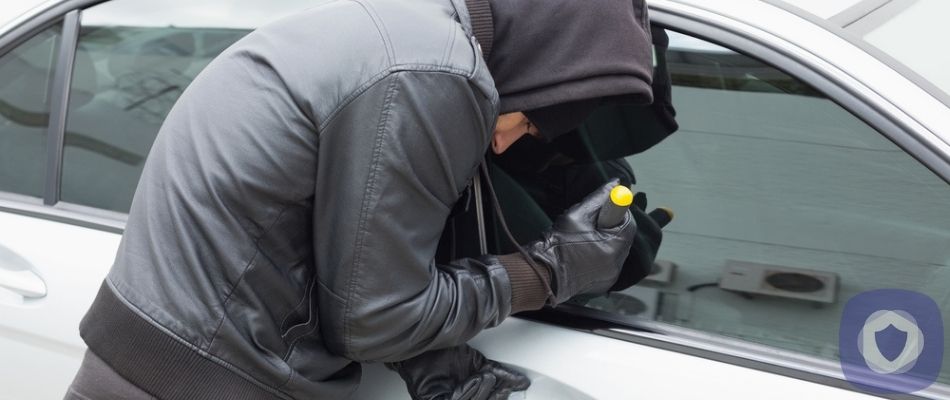Statistically speaking, your car is the most vulnerable part of your household. Thousands of cars are broken into each year, so it’s sadly not uncommon. Car theft is one of the only growing burglaries in the USA. If you’re unfortunate enough to experience a car break-in, you should follow these steps.
Recording the damage
If your car is broken into, you shouldn’t enter the car or move it at all. You should start documenting details of the damage from the outside.
Take pictures of the windows, doors, trunk, or any visible damage on the car. Photos of the damage can assist in an insurance claim. It may seem like a good idea to enter the vehicle and get a better view of the damage, but you should refrain from doing so. You may harm any evidence and make it harder to conclude an investigation.
In addition to taking pictures, you should document everything. List the damage done to the car and anything you believe was stolen from the vehicle. It’s best to be as specific as possible for the sake of your insurance company.
Filing a police report
Once you’ve got a clear idea of the damage done, contact the police and make them aware. You can give them all of your information and let them investigate.
Depending on the police department and the severity of the crime, the reporting process may differ. In some cities, law enforcement will send a police officer to assist you immediately, helping you file a report on-site. In some cases, you may be asked to go to the police station, or you may even be asked to fill out a report online.
If your city requires you to come to the station, you shouldn’t drive the car to get there. You don’t want to taint any evidence from the crime. It’s better to ask a friend for a ride or take an Uber.
When you file a report, you may be required to present your vehicle registration, driver’s license, insurance details, and a description of the damage and what was stolen.
Look out for identity theft
Unfortunately, it’s pretty easy to steal someone’s identity. If a thief gets ahold of your date of birth, social security number, or full name, they could steal your identity. It’s a common crime, with almost 18 million Americans falling victim every year.
Your priority should be notifying your debit card and credit card providers (if any were taken or disturbed) and requesting new cards. Even once you’ve informed your card company, you’re still at risk of a scammer taking credit out in your name. So you should contact one of the leading credit bureaus, such as Equifax, Experian, and TransUnion, to have a fraud alert placed on your account. You may also want to look into a service like LifeLock.
Insurance claims
Depending on the level of damage done to your car and what was stolen during the break-in, you may file an insurance claim. You should weigh the cost of damages against the cost of your premiums. If the total cost of damages exceeds your deductible by a significant amount, you should consider filing.
You should remember that not all claims go through the same insurance process. Broken windows, dents, or paint damage will be filed on an auto insurance claim, but stolen personal items won’t be covered. If you want to claim for stolen personal items, you’ll need to consult your renters or homeowners insurance.
The police should have given you a report number, which you can provide to your insurance agent, along with a list of stolen items and any information they ask for. They may request additional information during the claims process. Your insurer can advise you how long reimbursement takes. Your auto-insurance can also assist you in getting a car repair or replacement, if necessary.
Prevent a reoccurrence
After the experience of a break-in, the last thing you want is to deal with another one. You’ll want to take additional measures to ensure that you won’t experience it again. Here is a good list of safe practices to stop it from happening again.
- Don’t park your car in a poorly lit or remote area
- If you need to leave your car unattended for several days at a time, use a garage
- Keep your car doors locked
- Invest in a car alarm
- Invest in a steering lock
- Never leave your windows open – even half an inch
- Remove all valuables from the car, or hide them from view
The two most significant things on this list would be removing all valuables and investing in a car alarm. Hiding all valuables can stop your car from being targeted, as thieves will usually only take the risk of breaking into a car with something valuable (e.g., a cell phone, cash, or purse) on display. If you’ve invested in a car alarm, you could stop a theft in progress by spooking the would-be thief.
Wrapping up
When you’re a victim of a car break-in, all is not lost. You can do plenty of things, such as taking pictures of the damage, noting the missing items, and calling the police. But, you’ll want to take additional precautions in the future, such as never leaving valuables in your car (remove all smartphones, visible cash, etc.) and investing in a quality car alarm. You should also make sure you check your car insurance policy to ensure you’ve got the most comprehensive coverage possible.
This article has been reviewed and approved by Officer Banta.

Officer Banta is the official SecurityNerd home security and safety expert. A member of the Biloxi Police Department for over 24 years, Officer Banta reviews all articles before lending his stamp of approval. Click here for more information on Officer Banta and the rest of our team.

